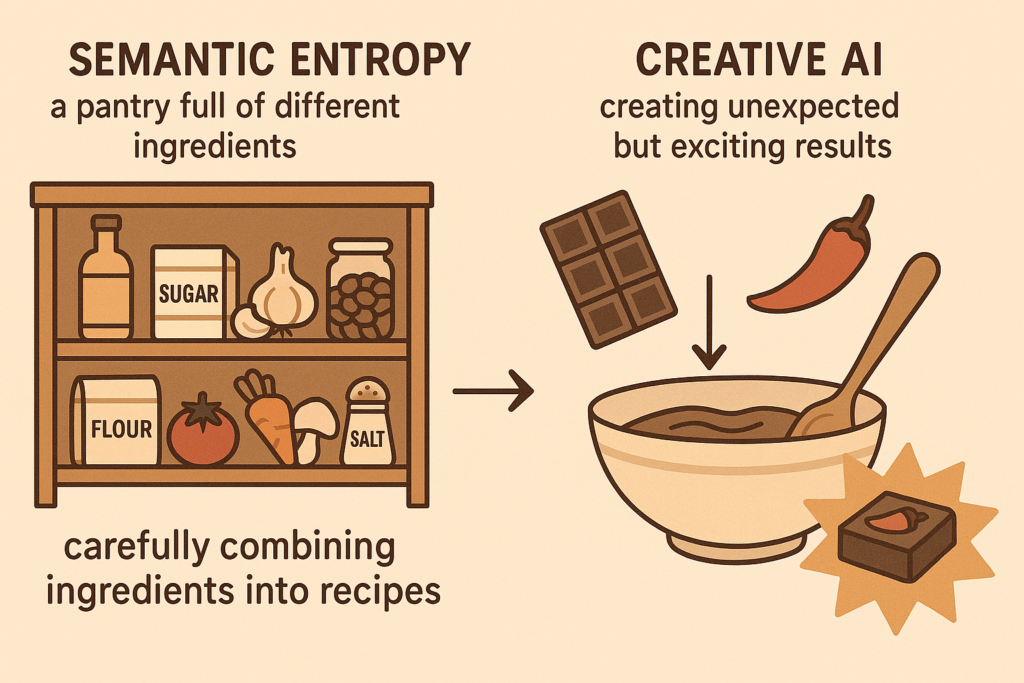|
Getting your Trinity Audio player ready...
|
Imagine an AI that doesn’t just solve problems but also creates entirely new ideas.
How does it do this? Surprisingly, by embracing a little chaos.
Scientists call this chaos “entropy,” which is just a fancy word for randomness or disorder. Picture the difference between a neat, organized supermarket and a lively street market. The supermarket is predictable, but the street market surprises you with new discoveries at every turn.
Recently, AI has advanced by embracing this idea of controlled chaos. Researchers have found that the best creative AI systems rely on two types of “messiness”, semantic entropy and structural entropy. Semantic entropy means having a wide variety of ideas, while structural entropy is about how those ideas are connected.

Think of semantic entropy like having a pantry full of different ingredients. Structural entropy is how carefully you combine those ingredients into recipes. A creative AI has many ingredients (ideas) available, but it carefully chooses how to combine them, creating unexpected but exciting results—like combining chocolate with chili in cooking.
Scientists discovered that creative AI consistently keeps lots of different ideas around (high semantic entropy), while carefully managing how these ideas link together (controlled structural entropy). This helps AI make surprising and innovative connections, much like a musician discovering an entirely new sound by mixing genres.
Why does this matter? It helps AI avoid just repeating old ideas. Instead, it can genuinely come up with new ones. Modern AI tools, like ChatGPT, Midjourney, and DALL-E, use this controlled chaos to create impressive text and artwork. For example, artists use AI to blend classic painting styles with futuristic themes, creating striking new visuals.
In medicine, AI creatively links different sets of medical data to discover new treatments humans haven’t thought of yet. These unexpected connections can lead to breakthroughs.
In business, companies now use AI to find innovative solutions and new product ideas. For instance, AI tools analyze huge amounts of market data and customer feedback to identify unexpected trends or create unique marketing campaigns. This helps businesses stay ahead of their competitors by predicting and responding quickly to market changes.
AI’s creativity is also changing the way we write and communicate. Content creators and writers use AI to generate fresh ideas, draft articles, and even write scripts for videos and podcasts. By embracing a bit of chaos, AI can suggest new topics, storylines, and angles that might otherwise never occur to humans.
Even in education, AI-driven creativity offers new opportunities. Educational software powered by AI helps create personalized learning experiences by creatively combining various educational methods. It keeps students engaged with unexpected and dynamic content, making learning more interactive and enjoyable.
Ultimately, AI creativity comes from carefully balancing order and randomness—just like nature does. Understanding this balance helps make AI not just smarter but truly creative, leading to innovative ideas that benefit everyone.
If this article provided you with value, please support me by buying me a coffee—only if you can afford it. Thank you!



